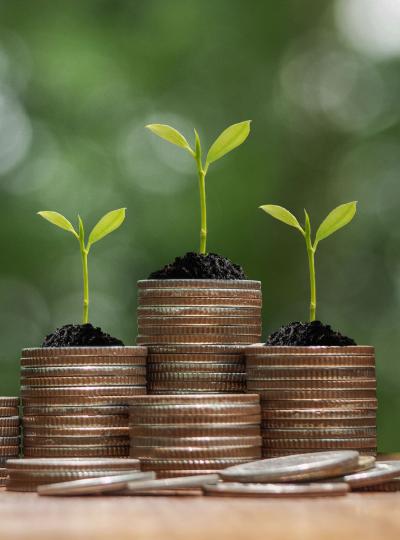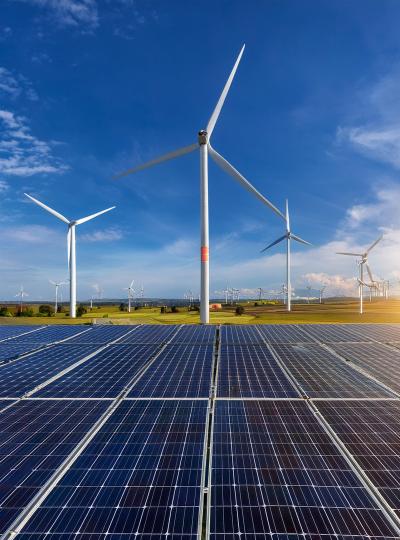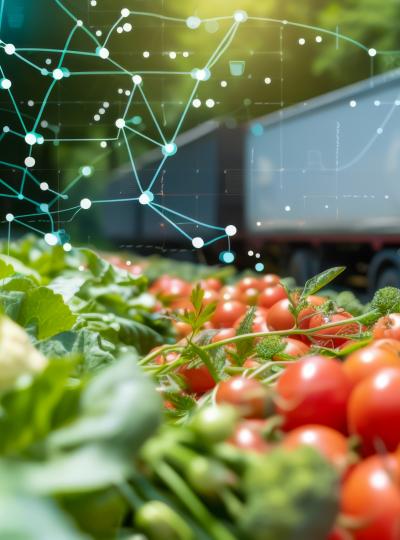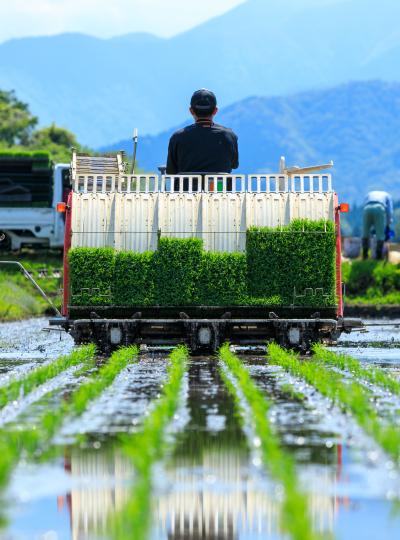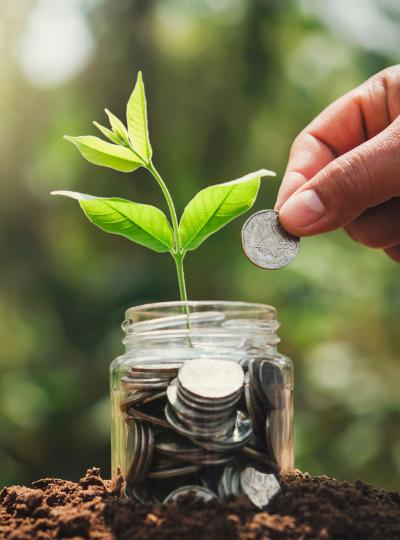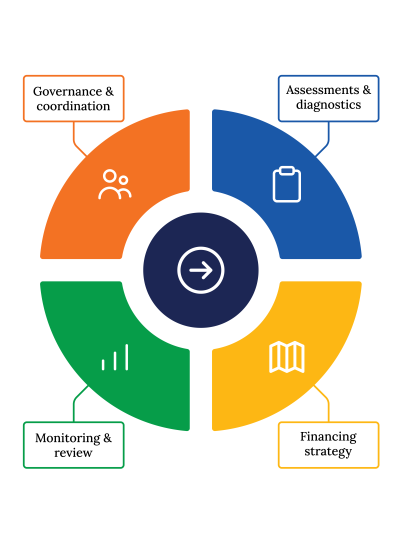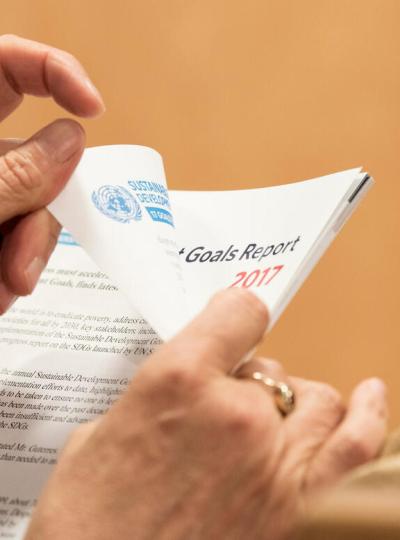Deep Sea Fish Farming




Business Model Description
Develop a deep-sea fish farming facility for popular fish species e.g., snapper and grouper as well as lower value species e.g. sea cucumber and oysters to diversify the product portfolio and potentially enhance the sustainability and profitability of the operation This facility could supply fish for domestic demand as well as improve the sustainability of local fish stocks.
Expected Impact
Deep sea fishing facility can improve livelihoods and contribute to exports, foreign exchange, GDP and local value addition.
How is this information gathered?
Investment opportunities with potential to contribute to sustainable development are based on country-level SDG Investor Maps.
Disclaimer
UNDP, the Private Finance for the SDGs, and their affiliates (collectively “UNDP”) do not seek or solicit investment for programmes, projects, or opportunities described on this site (collectively “Programmes”) or any other Programmes, and nothing on this page should constitute a solicitation for investment. The actors listed on this site are not partners of UNDP, and their inclusion should not be construed as an endorsement or recommendation by UNDP for any relationship or investment.
The descriptions on this page are provided for informational purposes only. Only companies and enterprises that appear under the case study tab have been validated and vetted through UNDP programmes such as the Growth Stage Impact Ventures (GSIV), Business Call to Action (BCtA), or through other UN agencies. Even then, under no circumstances should their appearance on this website be construed as an endorsement for any relationship or investment. UNDP assumes no liability for investment losses directly or indirectly resulting from recommendations made, implied, or inferred by its research. Likewise, UNDP assumes no claim to investment gains directly or indirectly resulting from trading profits, investment management, or advisory fees obtained by following investment recommendations made, implied, or inferred by its research.
Investment involves risk, and all investments should be made with the supervision of a professional investment manager or advisor. The materials on the website are not an offer to sell or a solicitation of an offer to buy any investment, security, or commodity, nor shall any security be offered or sold to any person, in any jurisdiction in which such offer would be unlawful under the securities laws of such jurisdiction.
Country & Regions
Sector Classification
Food and Beverage
Development need
enhance food security, reduce reliance on imports, and promote sustainable agricultural practices. Jamaica has significant potential to leverage its biodiversity for high-value exports like superfoods and plant-based pharmaceutical ingredients. However, challenges such as youth unemployment, violence, and governance issues hinder equitable progress
Policy Priority
The Jamaican government emphasizes innovation and economic diversification. Policies focus on improving export competitiveness, enhancing product standards, and supporting micro and small businesses. Key initiatives include modernizing research facilities, promoting sustainable practices, and expanding export market penetration services
Gender inequalities and marginalization issues
particularly among women, youth, and rural populations. Women often face limited access to resources like land ownership and financing, while youth struggle with unemployment. Requires interventions to empower marginalized groups through education, training, and inclusive business models
Investment opportunities introduction
diverse investment opportunities, from agro-processing and niche product development to sustainable packaging solutions and innovative ventures like deep-sea farming. These opportunities align with global demand for unique, high-quality products and the country’s focus on food security, export growth, and environmental sustainability.
Jamaica faces significant climate change challenges in agriculture due to its small land mass, fragile ecosystems, heavy reliance on food imports, and escalating impacts of frequent natural disasters.
Food and Agriculture
Jamaica imports $60M of fish annually, with popular items like tilapia, basa, and shrimp. High per capita fish consumption (25.8 kg/year) indicates over 79% reliance on imports. Urgent need to boost local production for food security.
Policy priority
Aquaculture Development Plan 2012-2025 in Jamaica, supported by FAO, prioritizes industry strengthening, competitiveness, domestic market enhancement, and limited species diversification.
Gender inequalities and marginalization issues
In Jamaica, only 20% of farmers are young people 18 to 35 years of age, and only 31% of youth farmers are female. In the fisheries sector, this is further reduced to 5.9% females.
Investment opportunities introduction
Explore investment in a deep-sea fish farming facility for high-demand species like snapper and grouper, alongside lower-value options such as sea cucumber and oysters. Addressing domestic demand, this initiative enhances local fish stock sustainability.
Key bottlenecks introduction
Aquaculture is constrained due to lack of credit, high levels of importation, energy costs and across the country aquaculture is typically practiced by a large number of small-scale fish farmers who own less than 1.0 ha of land (limited skill-pool)
Meat, Poultry and Dairy
Pipeline Opportunity
Deep Sea Fish Farming
Develop a deep-sea fish farming facility for popular fish species e.g., snapper and grouper as well as lower value species e.g. sea cucumber and oysters to diversify the product portfolio and potentially enhance the sustainability and profitability of the operation This facility could supply fish for domestic demand as well as improve the sustainability of local fish stocks.
Business Case
Market Size and Environment
USD 50 million - USD 100 million
The value of Jamaica's fish industry is significant, contributing an average of US$103.8 million annually ($16 billion) to the nation's gross domestic product (GDP). Jamaica imports approximately US$60 million worth of fish, crustaceans and molluscs annually with the most popular products being tilapia, basa and shrimp
Per capita consumption of fish in Jamaica is 25.8 kg per annum
Indicative Return
15% - 20%
Jamaica intends to attract similar investment Lerøy Seafood Group. To this end, the Group’s gross profit margin was used as a benchmark.
Investment Timeframe
Long Term (10+ years)
The payback period in the aquaculture industry is expected to be long term (>10 years since this is not an active or mature sector in Jamaica. Additonally, since it is a capital intensive industry
Ticket Size
> USD 10 million
Market Risks & Scale Obstacles
Market - Volatile
Capital - CapEx Intensive
Impact Case
Sustainable Development Need
Overexploited Fish Stocks:Jamaica’s marine fish stocks are overexploited, with reef fish populations declining due to unsustainable practices. The IOA’s deep-sea fish farming model addresses this by reducing pressure on wild stocks and providing a sustainable alternative for domestic and export markets.
Environmental Pollution from Fish Farming:Traditional coastal aquaculture contributes to localized pollution, including nutrient overloads and habitat degradation. Deep-sea farming mitigates these issues by utilizing stronger currents and deeper waters to dilute waste, minimizing environmental impact while maintaining high production levels.
Food Security Challenges: Jamaica imports a significant portion of its seafood, contributing to trade imbalances and food insecurity. The IOA’s business model supports local production of high-demand species like snapper and grouper, promoting self-sufficiency and reducing reliance on imports. Jamaica has one of the highest levels of fish consumption per capita in the Americas (25.8 kg/year in 2017).
Gender & Marginalisation
Women constitute a significant proportion of the aquaculture workforce, especially in processing. Investment in this sector can lead to increased job opportunities for women
Expected Development Outcome
Sustainable Marine Ecosystems: The IOA’s deep-sea fish farming model addresses overexploited reef fish stocks by shifting production offshore, reducing pressure on wild populations. Current baseline data shows declining reef fish populations due to unsustainable practices, threatening marine biodiversity and ecosystem health.
Pollution Reduction:Traditional coastal aquaculture contributes to localized pollution and habitat degradation. Deep-sea farming leverages ocean currents for waste dilution, addressing environmental concerns while maintaining sustainable production. Current practices in coastal zones exacerbate ecosystem stress, highlighting the need for offshore alternatives.
Food Security Improvement: Jamaica imports significant quantities of seafood to meet demand, with local production unable to satisfy consumption needs (e.g., 15 kg per capita annually). The IOA targets increased domestic production of high-demand species like snapper and grouper, reducing reliance on imports and enhancing food security.
Gender & Marginalisation
Food security and nutrition among the most vulnerable and marginalized persons of Jamaica can be attained. Additionally, investment in this space will lead to job creation, increasing job opportunities for women
Primary SDGs addressed

2.3.2 Average income of small-scale food producers, by sex and indigenous status
2.1.1 Prevalence of undernourishment
2.3.2 The average farming gross salary in Jamaica is $904,219 or an equivalent hourly rate of $435.
2.1.1: FAO et al. (2015) report 14.7 million undernourished people in developed regions, which corresponds to an average prevalence of 1.17% in the developed regions. Prevalence of undernourishment in Jamaica as of 2019 is 7.7%
2.3.2 By 2030 double the agricultural productivity and the incomes of small-scale food producers, particularly women, indigenous peoples, family farmers, pastoralists and fishers, including through secure and equal access to land, other productive resources and inputs, knowledge, financial services, markets, and opportunities for value addition and non-farm employment
2.1.1 By 2030, end hunger and ensure access by all people, in particular the poor and people in vulnerable situations, including infants, to safe, nutritious and sufficient food all year round.

14.7.1 Sustainable fisheries as a proportion of GDP in small island developing states, least developed countries, and all countries. In particular, the proposed aquaculture is terrestrial and therefore conserves the marine biodiversity of the Gulf.
This indicator is intended to measure the value of sustainable fisheries. It is expressed as a percentage of the country’s Gross domestic product (GDP). Sustainable fisheries in Jamaica account for approximately 0.22% of GDP
By 2030, increase the economic benefits to small island developing States and least developed countries from the sustainable use of marine resources, including through sustainable management of fisheries, aquaculture and tourism

8.2.1 Annual growth rate of real GDP per employed person
GDP per capita growth (annual %) - Jamaica- 4.3% (2021
The ideal/targeted GDP growth rate is close to 5%
Secondary SDGs addressed

Directly impacted stakeholders
People
Gender inequality and/or marginalization
Planet
Corporates
Indirectly impacted stakeholders
Corporates
Outcome Risks
Deep sea fishing farming may expose environmental issues to the overall marine environment. Aquaculture is susceptible to disease outbreaks among fish stocks.
Impact Risks
The establishment of fish farms may lead to conflicts with local fisher communities.
Impact Classification
What
Increase in exports and local distribution of aquaculture products which will improve food availability and exports, thus creating more employment and economic growth
Who
People living below the poverty line can access healthier food and improve nutrition. Additonally, more employment opportunities will be presented for women.
Risk
Some regulatory barriers in regards to licensing for aquaculture management and production
Contribution
Small-scale food security, as well as to the employment of the coastal communities source of food and livelihoods for about 40,000 persons.
How Much
Each Jamaican is said to consume an average of approximately 25.8 kilograms of fish per annum
Impact Thesis
Deep sea fishing facility can improve livelihoods and contribute to exports, foreign exchange, GDP and local value addition.
Enabling Environment
Policy Environment
The Fisheries Policy 2008 ensures sustainable use of Jamaica's fisheries, focusing on proper management, research, environmental monitoring, education, enforcement, licensing, data collection, and community outreach, with Marine Capture and Aquaculture as key branches.
One of the main objectives under the Medium Term Socio-Economic policy Framework (MTF) 2021-2024 is to develop and promulgate the National Fisheries and Aquaculture Policy
MTF Objective: To increase by 15% fisheries contribution to agricultural growth by 2026.
Financial Environment
The Fiscal Incentives Act allows for the applicability of the Employment Tax Credit, Capital Allowance, Productive Input Relief, and the Jamaica Stock Exchange Junior Market income tax incentive
Regulatory Environment
The Fisheries Act, 2018, establishes rules for managing fisheries, aquaculture, and related activities in line with ecosystem approaches and international standards, ensuring effective and sustainable development.
(Regulation): Local food safety regulations, as well as international food safety regulations such as HACCP, FSMA.
Marketplace Participants
Private Sector
Algix Jamaica Limited
Government
Government: Government of Jamaica, Ministry of Agriculture and Fisheries, National Fisheries Authority
Target Locations
References
- (Algix Jamaica Ltd. in St. Elizabeth spans 300 acres, with 120 acres of ponds. Supplies the "Pride of Jamaica" fish, contributing 70% to the local market and hospitality industry, prioritizing environmental and cultural preservation. Earth Ocean Farms: Earth Ocean Farms operates submersible aquapods off the coast of Mexico to farm species like red snapper and totoaba.

